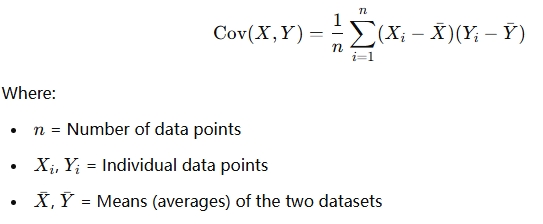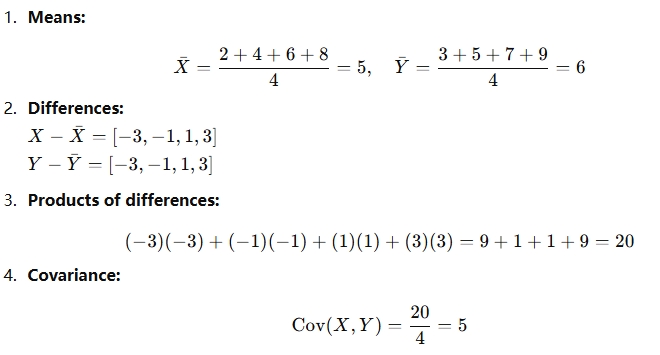Formula:
Covx,y = ∑ (xi - x) (yi - y) / N-1
Covariance Calculator
What is a Covariance Calculator?
A covariance calculator is a tool used to measure the covariance between two sets of data — essentially how two variables change together. Covariance shows the direction of the relationship between the variables:
- Positive covariance: When one variable increases, the other tends to increase.
- Negative covariance: When one variable increases, the other tends to decrease.
- Zero covariance: No clear relationship between the variables.
The covariance between two variables X and Y is calculated using the formula:

Why use a Covariance Calculator?
- Saves time: Quickly computes covariance for large datasets.
- Reduces error: Minimizes mistakes in complex calculations.
- Data analysis: Helps identify relationships between variables.
- Statistical modeling: Essential for regression, correlation, and machine learning.
- Investment and finance: Used to assess how different assets move together.
How does a Covariance Calculator work?
- Input data: Two sets of numerical values (like stock prices, test scores, etc.).
- Calculate means: Average of both datasets.
- Subtract means: Difference between each data point and its mean.
- Multiply differences: Pairwise product of differences for each data point.
- Sum and divide: Sum the products and divide by the number of data points.
Example Calculation:
Let’s say we have two datasets:
- X = [2, 4, 6, 8]
- = [3, 5, 7, 9]

When is a Covariance Calculator used?
- Finance: Analyzing how stocks or assets move together.
- Economics: Studying relationships between economic indicators.
- Machine learning: Identifying feature relationships in datasets.
- Data science: Discovering patterns and trends in data.
- Research: Examining connections between experimental variables.